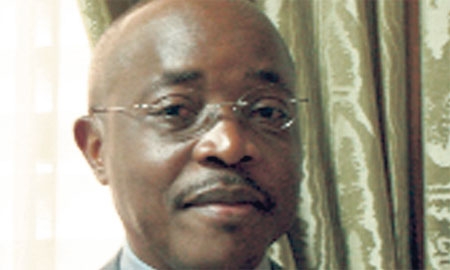Now in Angola’s ninth year of peace, the city is only recently getting a grip on uncontrolled urban sprawl and implementing measures to ensure the population’s needs are met in a more orderly manner.
One of the many devastating consequences of the civil war was a mass rural exodus into the cities, which were relatively safe from the warring armies and landmines.
As the capital, Luanda received the lion’s share of the migrants, and the city’s population exploded from just over 2 million in 1995 to about 6 million today. Unequipped for so many people, many of Luanda’s neighborhoods sank into slum status with hastily and shoddily constructed buildings and an acute lack of services, such as schools, health clinics and green areas.
Since 2002, the government has faced the enormous task of rebuilding the country’s war-torn infrastructure. Serendipitous oil revenues aided projects along, leading to the emergence of a booming construction sector. According to Isabel Tormenta of GUE, the one-stop business creation office, since 2003 her agency has seen a sharp increase in the number of construction companies established.
“Initially it was trade, services, and commerce,” she says. “Today there’s a gradual increase of companies in other sectors like agriculture and industry, but the construction sector leads, followed by agriculture. There’s beginning to be a revival of certain sectors that are now fundamental in this phase of economic diversification, which is important to slow down dependence on the oil sector.”
For the first several years, nearly all building materials had to be imported, but as Angola makes progress, more and more factories have sprung up locally to supply the sector with cement, ceramics and steel, among others, thus reducing dependence on imports while at the same time, creating more wealth and jobs at home.
Yet there remains a long way to go, especially in the chaotic city of Luanda, which this past January, celebrated 435 years since its founding by Portuguese explorer Paulo Dias de Novais. About 130 years ago, the city was known as the ‘Paris of Africa’. Today, it has made its mark on the world map in a rather unexpected way: for the past couple years, Luanda has been classified as the most expensive city in the world.
Construction companies have excelled at covering the housing needs of the expat community drawn in by the hydrocarbons sector, yet not enough has been done to address the housing shortage for the poor and working classes.
The government body entrusted with issuing licenses and territorial planning is IPGUL, the Luanda Institute of Planning and Urban Management. On a trip to Curitiba, Brazil in the 1990s, President dos Santos was impressed by a similar institution and what it had achieved in sustainable development. Upon his return to Angola, the president set the wheels in motion to create IPGUL, which was finally set up in 2007.
IPGUL is serving as a pilot project in Luanda and if it is deemed viable and successful, its model will be extended to the rest of the national territory.
Headed by Dr. Helder Jose, a doctor of architecture, IPGUL is tasked with several responsibilities, including the preservation of Luanda’s historical buildings, many of which date back to the colonial period, and the formalization of land ownership limits and rights. However, the real challenge lies in putting a halt to uncontrolled, and often damaging, construction, a situation that arose among Luandans themselves to deal with the housing shortage.
“Our population is very spontaneous, which in fact is an aspect that has its positive side, since Angolans are not defeated by a simple problem. Instead, they always find a way to solve it. But that spontaneity also has its negative side when it is left unregulated and uncontrolled. It impacts not only on housing but also trade and transport. Luanda is overly congested in every way,” says Dr. Jose.
One of IPGUL’s many initiatives has been to organize into a database all information available concerning Luanda’s existing buildings and public services. Early last year, it launched a quarterly magazine that charts new construction areas in several of Luanda’s municipalities, including Ingombota, Kilamba Kiaxi and Viana, with a special emphasis on housing, commerce, industry and tourism.
In 2008, Dr. Jose led a group from IPGUL to Lisbon to pick up an award for the good work Luanda had done on the reconstruction of the province, as well as to show the world what his organization was doing to improve Luanda. “We had the courage to take a positive image of Luanda, when outside Africa only issues of deprivation, poverty and disease are known,” he recalls. “Africa is never seen as a continent where positive achievements are possible and where people are capable of doing great things, but we are trying to set a different example.”

0 COMMENTS